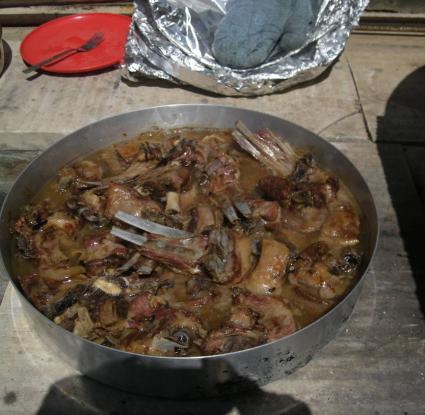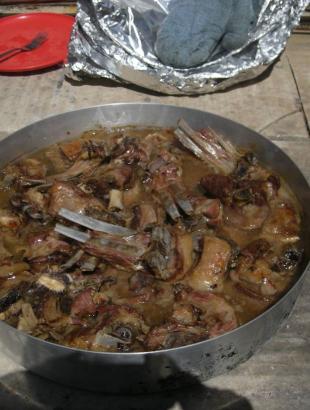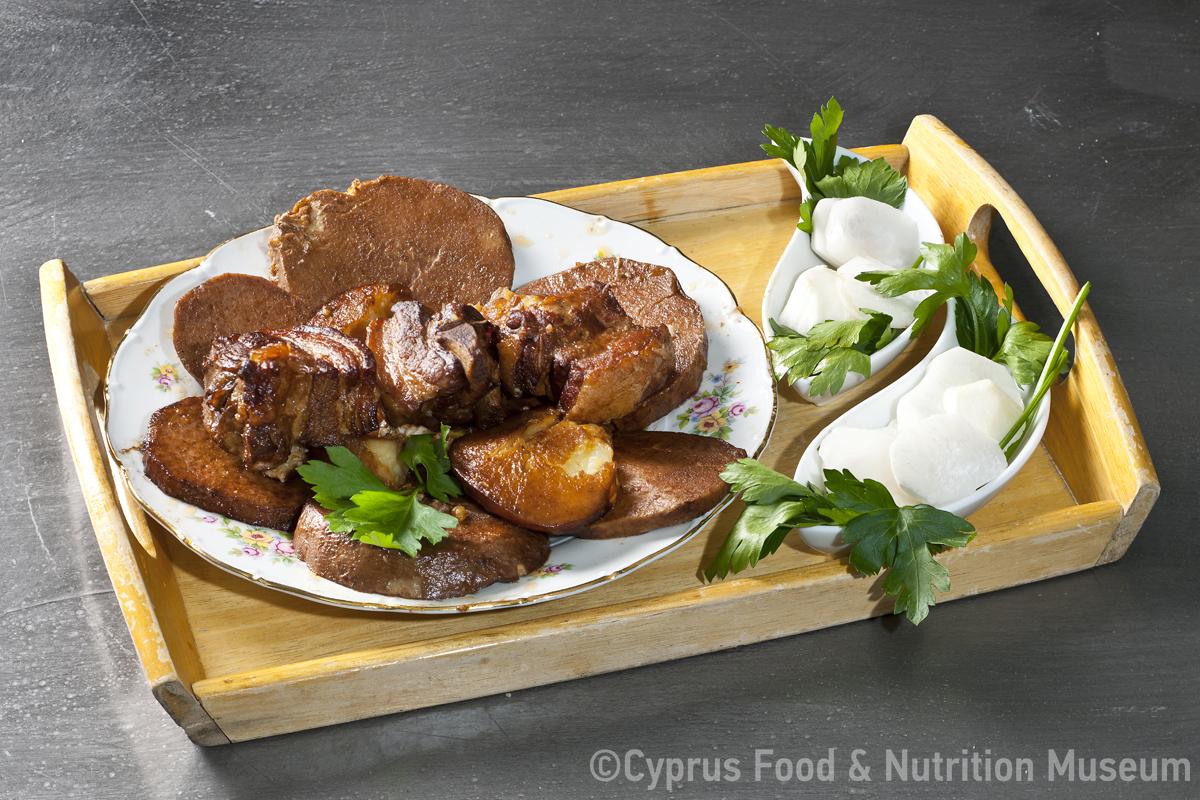Name - Origin
Sheep and lamb meat.
Butchers were the main buyers of sheep sold by shepherds (Xioutas, 1978). Based on their experience, they would select and buy sheep that were young, fat and well-fed. A butcher would slaughter and skin the animal and skillfully cut it into four pieces, as customers, due to poverty, could afford a quarter of the sheep. The parts of the sheep for consumption were the head and liver, the thighs, the loin, the ribs and the neck.
Functional and symbolic role
The small quantity of fresh meat consumed by Cypriots in rural areas was mainly goat and sheep meat. The merká (thighs) of the animal with lean and soft meat, were considered to be the best part of lamb or sheep meat. Cypriots preferred to use the merka for ofto in the oven - with potatoes and tomatoes. They would also make souvlakia (souglouthkia) (Xioutas, 1978 & Petasis, 1992).
In the past, souvlakia were made exclusively with tender lamb meat from "threftari" (not with pork meat, which is used today.
Fresh lamb and sheep meat was intended for Sunday meals and feasts.
Lamb meat was served when celebrating the Resurrection and symbolised the sacrifice of Jesus Christ.
Additional information and bibliography
In the past, the consumption of fresh meat by Cypriots was rather occasional, mainly on Sundays and feasts, and it mainly consisted of goat, sheep and poultry meat. The meat of young male sheep was considered better than the meat of female sheep (Xioutas P., 1978). Besides, female sheep would be slaughtered for their meat only in times of great need, as they were considered lucrative (for producing milk and wool).
Xioutas P. (1978), Κυπριακή λαογραφία των ζώων. Publications of the Centre for Scientific Research, XXXVIII, Nicosia.
Petasis G. (1992), Η κωμόπολη της Κυθρέας. Stelios Livadiotis Printing House, Nicosia.
Antonia Matala, Demetra Demetriou




